 Sunday/Weekend
Sunday/Weekend

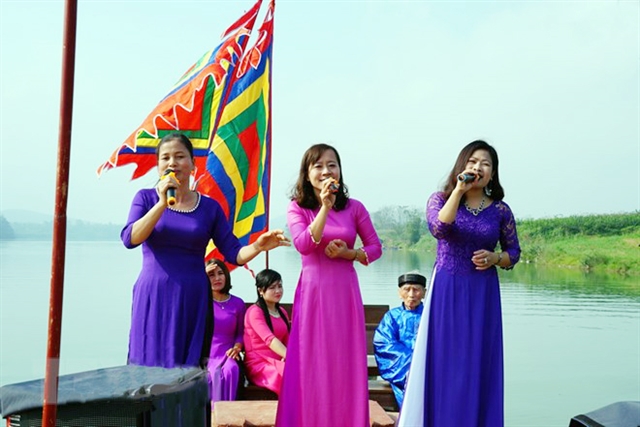 |
| The artists of the Bồi Sơn Commune's Folk Song Club perform Ví-Giặm for tourists on the Lam River. VNA/VNS Photo Bích Huệ |
The Ví and Giặm folk singing tradition has been passed down by working people in the central provinces of Nghệ An and Hà Tĩnh for hundreds of years, but sadly it is dying out due to a lack of talent and traditional performance spaces.
Ví, with its 15 tunes, and Giặm, with its eight airs, are forms of alternate folk songs that were traditionally sung without musical accompaniment while people were working. The songs reflect the work, culture and feelings of people in the central coastal region.
People sing Ví-Giặm songs while they lull their children to sleep, work in the fields, row boats, weave cloth or husk rice. The lyrics of the songs are always related to a type of work, such as Ví Phường Vải (Songs for fabric weaving), Ví Phường Nón (Conical hat making), Ví Phường Củi (Firewood gathering), Ví Trèo Non (Mountaineering), Ví Đò Đưa (Boat rowing), Giặm Ru (Lullabies), and Giặm Khuyên (Advice songs).
These two singing styles are commonly known as Ví-Giặm. Having a key performance space has been identified as one of the essential aspects in the preservation of Ví-Giặm folk songs. However, performance spaces for Ví-Giặm are steadily dwindling.
Nguyễn Thị Tâm, vice chairwoman of the Folk Song Club of Thanh Chương District, Nghệ An Province, said that recreating the ancient performance setting was difficult.
Ví-Giặm folk songs were traditionally sung while people are at work on rivers, rice fields, mountains, or at sea.
"These days, the spaces used for archiving such folk songs are artificial, on stages and at festivals, which is not conducive to recreating the original space of Ví-Giặm folk song performances," Tâm said.
According to Tâm, the club has to rent costumes and performance props to recreate scenes, but they can only partially accomplish this.
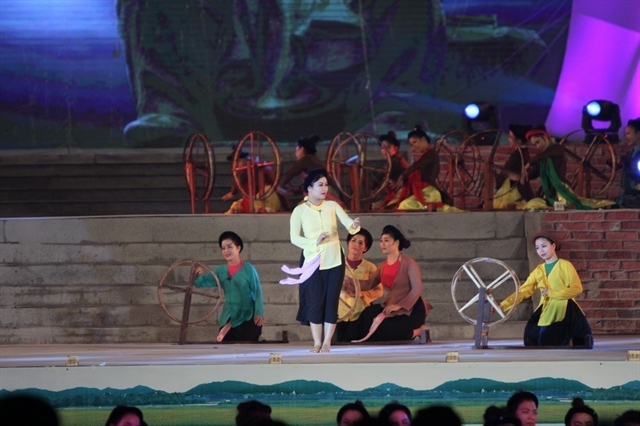 |
| Singing Ví-Giặm songs on the Lam River. For Ví-Giặm singing, the stage is where its audience is most likely to be doing their jobs, whether in the field, on the river, or at sea. Photo courtesy of Nghệ An newspaper |
Chairwoman Hoàng Thị Cẩm Vân of the Ví-Giặm Folk Song Club in Vinh Tân Ward, Vinh City, said that recruiting young folk music talents was just as hard as constructing a suitable venue and acquiring the necessary props.
According to Vân, folk singing has been passed down and refined over the years, but it is more challenging to connect with people today than in the past.
She noted that there aren't many experienced artists remaining, so it's up to the local folk music clubs to learn and preserve as much of the history as possible.
Reviving Ví-Giặm folk music
Although there are challenges to preserving Ví-Giặm folk music, numerous pragmatic approaches have been taken to ensure it will not be lost.
To restore performance spaces for Ví-Giặm in Nghệ Tĩnh, the provincial People's Committee has worked out a project to promote the folk songs from 2021-2025.
This roadmap will focus on restoring performance spaces on the Lam River, Nam Đàn, and in the coastal plains of Cửa Lò and Nghi Lộc.
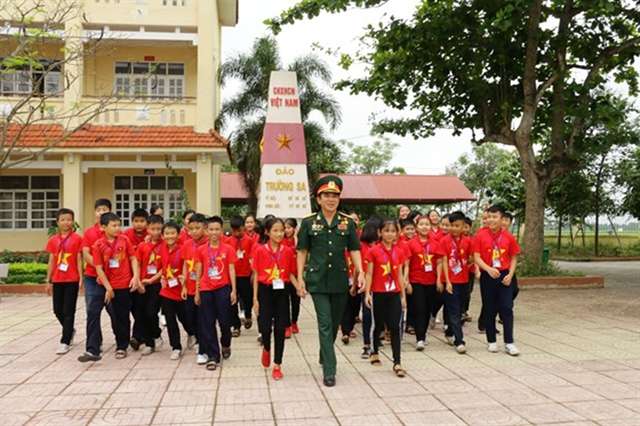 |
| The Kim Liên Secondary School, Nam Đàn District, hosted a performance by the club of Ví-Giặm folk songs, whose focus was on songs with the theme of Hòang Sa - Trường Sa islands. VNA/VNS Photo Bích Huệ |
The Nghệ An culture authority established a venue in Hồ Chí Minh Square last year to showcase and exchange Ví-Giặm folk tunes. Such activities have been carried out to conserve, promote, and bring back the folk music genres, and contribute to tourism industry in the province.
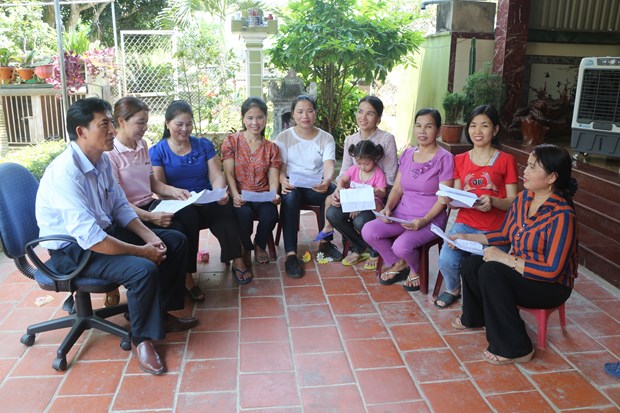 |
| Nam Đàn District's Hồng Sơn Ví-Giặm Folk Song Club gathering. Nghệ An Province has made preserving Ví-Giặm folk songs a priority in recent years. VNA/VNS Photo Bích Huệ |
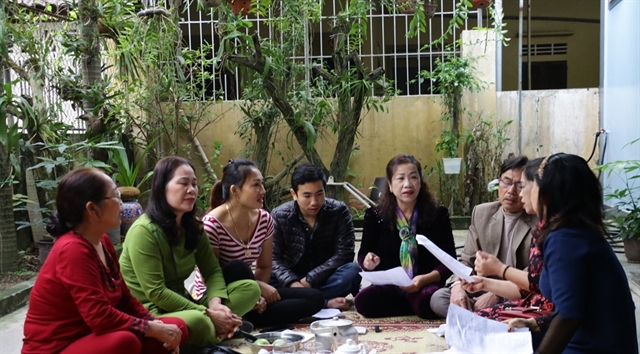 |
| Artists of the Ví-Giặm folk songs club in Vinh Tân Ward, Vinh City, Nghệ An Province in an exchange session. VNA/VNS Photo BÍch Huệ |
Nguyễn Thành Ngân, chairman of the Sông Lam Folk Song Association, said that preserving Ví-Giặm singing was consistent with the restoration of performance venues to create an environment for the heritage to develop naturally and for the folk songs to integrate with the community.
"This is exactly the criteria set by UNESCO for these folk songs after they were recognised as a representative intangible cultural heritage of humanity," Ngân said.
According to Bùi Công Vinh, deputy director of the Nghệ An culture authority, the sector will continue to build and recreate venues at a number of locations, including the Lam River, Vinh City and the Nghệ An Museum, as well as the Kim Liên heritage site.
Vinh confirmed that the authority will work out more schemes, such as policies to assist folk music clubs and performers to promote Ví-Giặm singing more widely.
With the right care and attention, this storied tradition of fine folk verse will be around for many more generations to come. VNS




